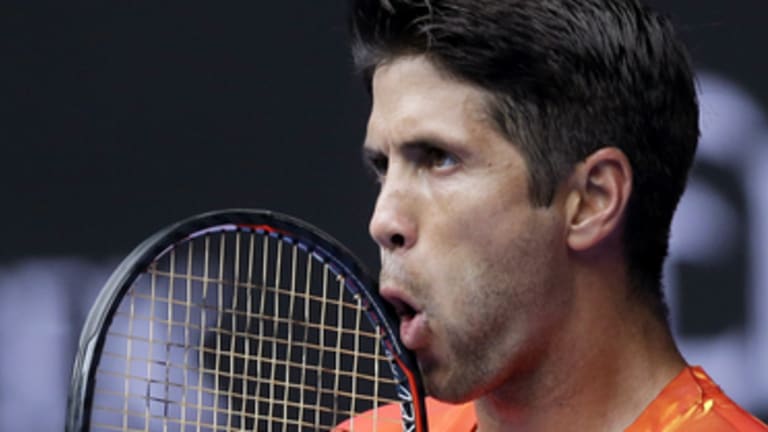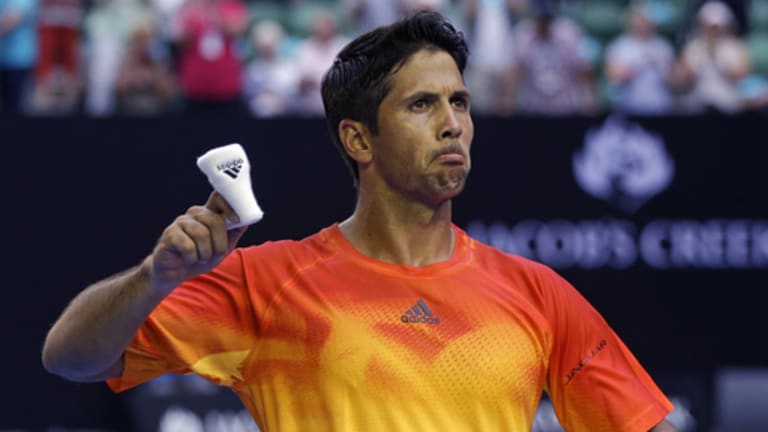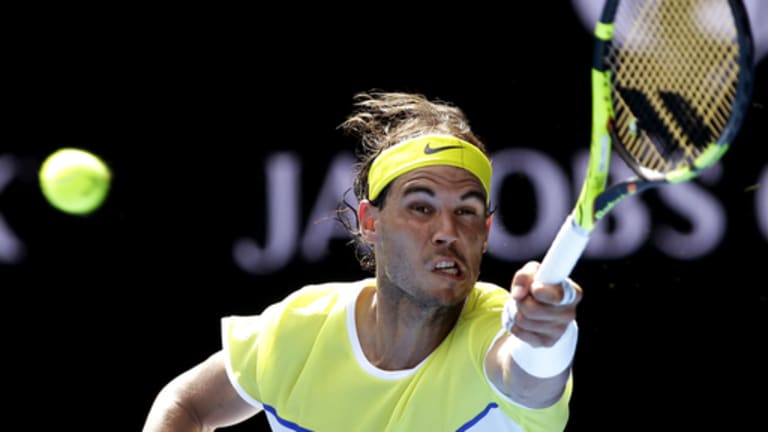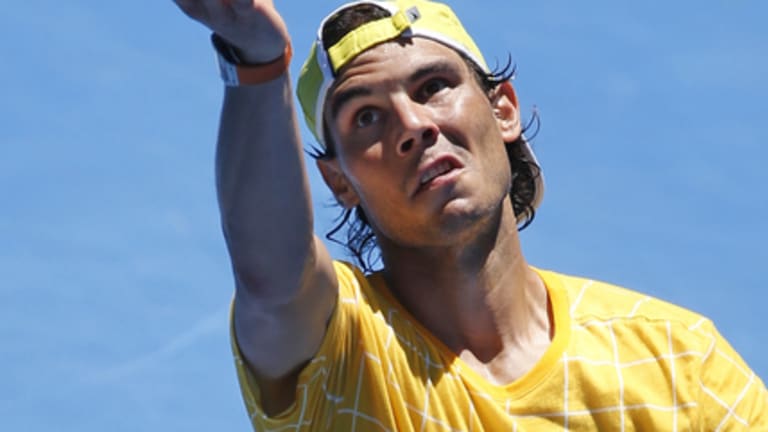“The game is changing a little bit,” Rafael Nadal said after losing to Fernando Verdasco, 7-6 (6), 4-6, 3-6, 7-6 (4), 6-2, in four hours and 41 minutes, in the first round of the Australian Open on Tuesday. “Everybody now tries to hit all the balls. There is no balls that you can prepare the point, no? Everybody hit the ball hard and try to go for winners in any position. Game become a little bit more crazy in this aspect.”
Crazy, indeed—that was the only way to describe Verdasco’s performance. I don’t think I’ve ever watched a match where I was left in head-shaking amazement so often. I don’t think I’ve ever blurted “Whoa!”—or a possibly profane equivalent—after so many winners. Verdasco, as Rafa said, really did try to hit all the balls. While half of them landed out, that was OK, because when they went in, they didn’t come back. How many times has a player hit 90 winners? How many times has a player committed 91 errors and still won? Verdasco did both.
“I just closed my eyes,” the underdog Spaniard joked afterward.
But he also made it clear that his strategy wasn’t completely insane.
“Today I was just like trying to be as aggressive as possible,” Verdasco said, “but also not like so crazy.”
Then he philosophized about the paper-thin line that separates the brilliant and the idiotic in tennis, a line that Verdasco has resided on for most of his career.
“Sometimes if you do what I did today," he said, "and you put all the balls outside, it’s like, ‘This guy’s crazy. He just hit everything and he miss.' But when they are coming in, it's unbelievable. The difference is just so little, and can be so big.”



